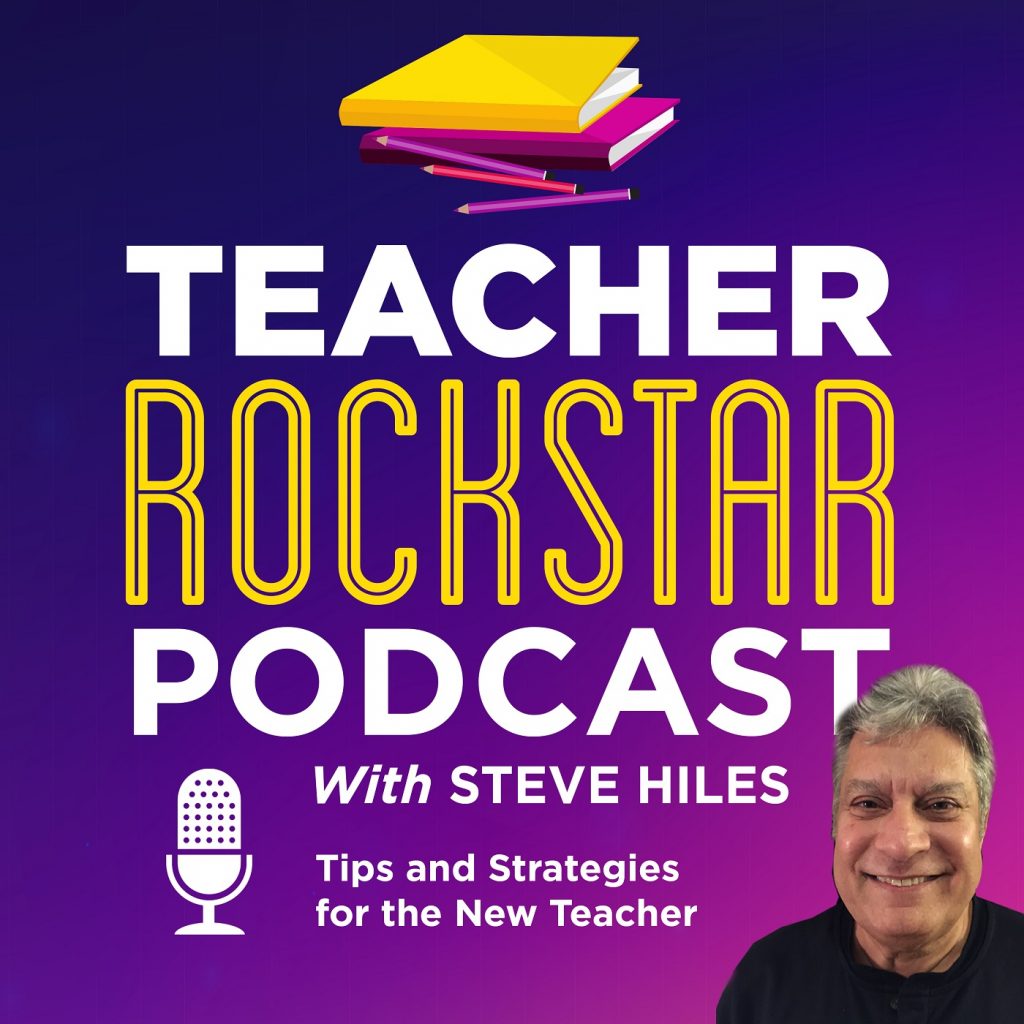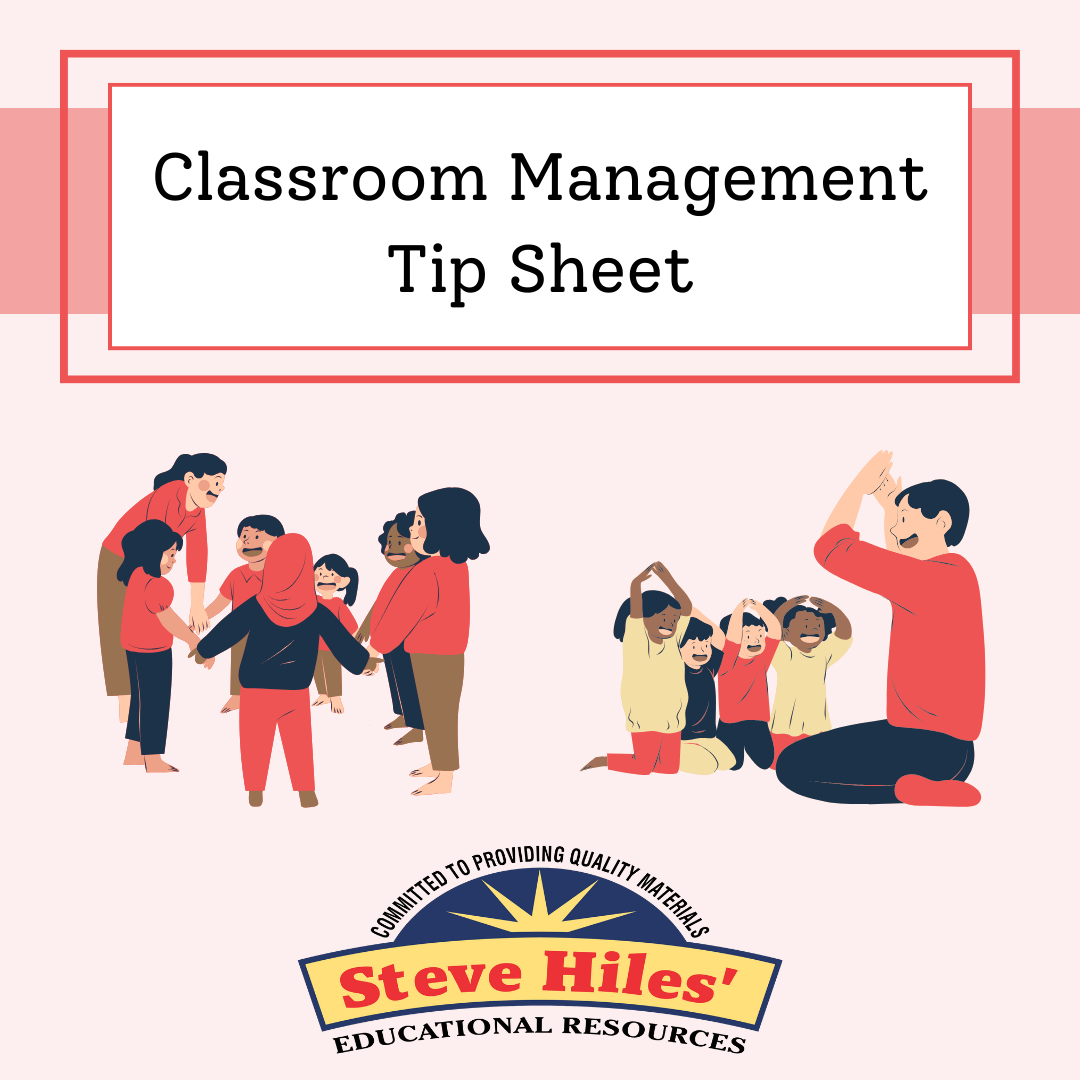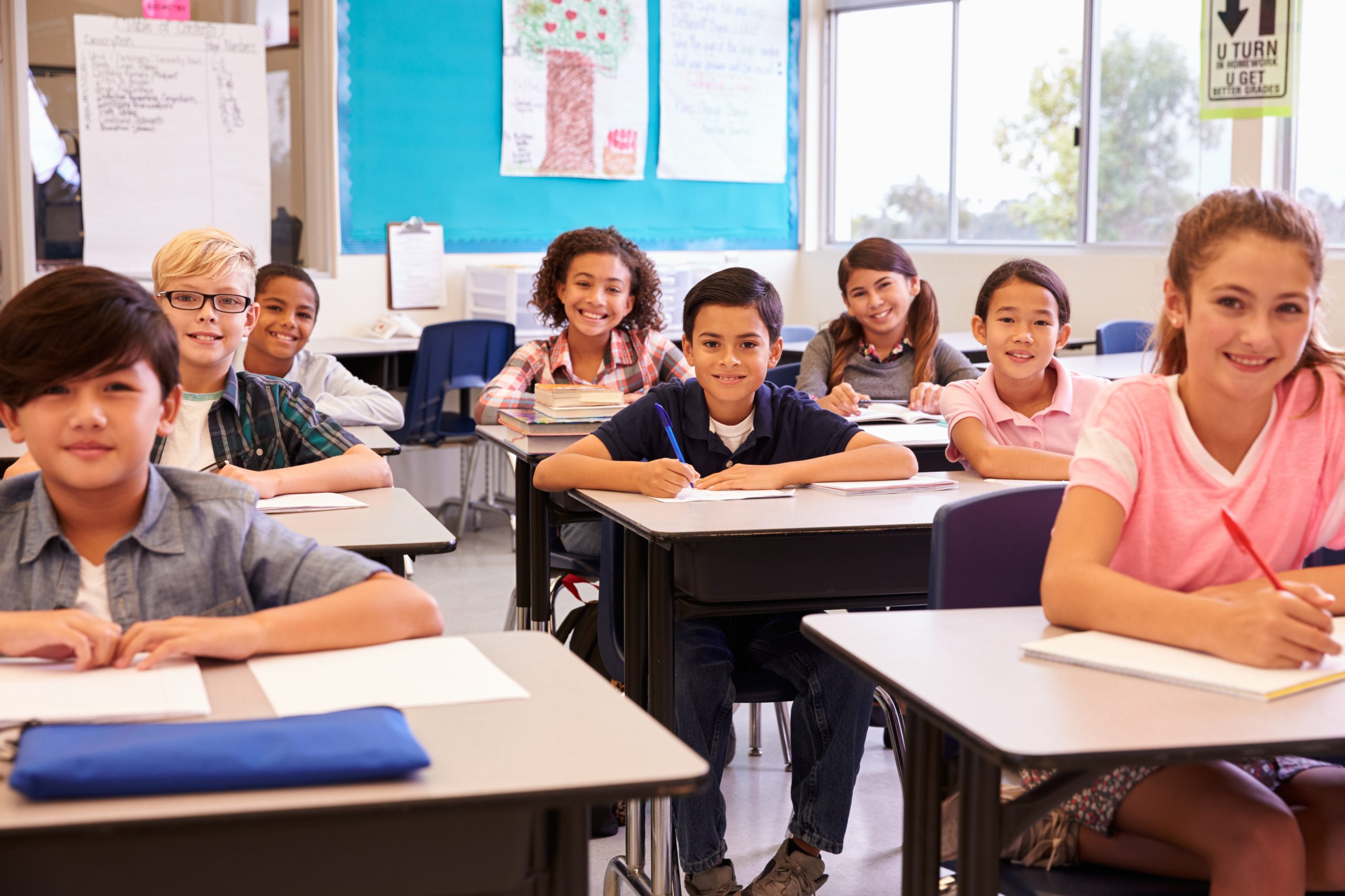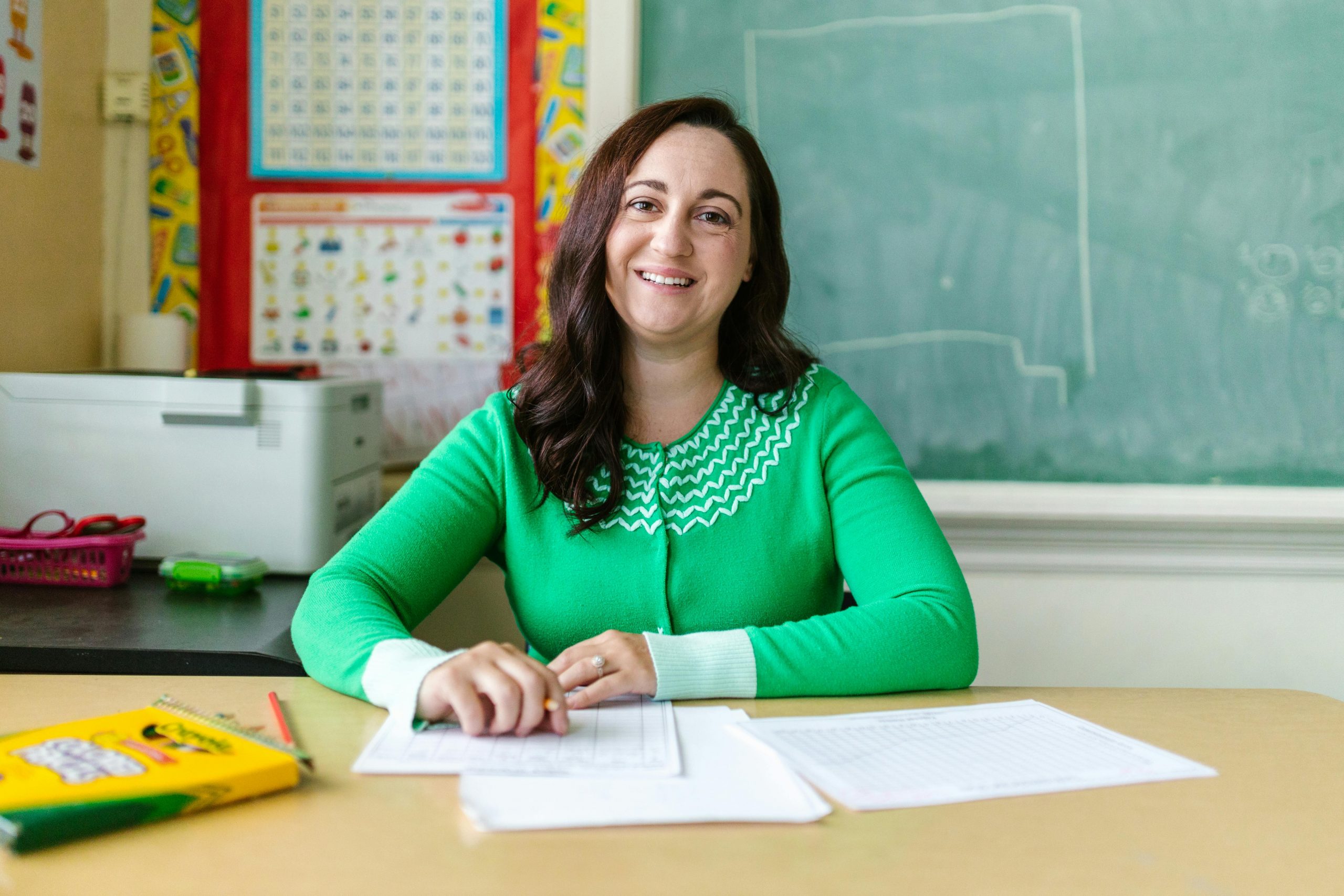I want to share the importance of hands-on learning it’s one of the three main learning styles students possess. The buzz word we are looking for is kinesthetic learner. All that it really means is that some students learn best when their sense of touch is involved where others depend primarily on their sense of sight or hearing. Hands-on learners are often the ones to whom standard lesson plans don’t cater, so it’s worth making a point to include movement-based activities when planning any lesson.
Another reason to teach hands-on is because research shows it’s one of the most effective ways to teach English language learners. The teaching method known as total physical response (TPR) intentionally associates physical movements with language instruction. The method is so effective, even beginners thrive under this type of instruction. Some classrooms rely completely on TPR for instruction, but I find that blending movement activities with other teaching methods is most effective at any level ESL class.
Finally, hands-on teaching gives your students a great experience. If someone asked me about the most meaningful lecture I heard in high school, I’m not sure I could name one. I can, however, tell you about several hands-on activities I did in those otherwise less than memorable classes. Students remember the activities that involve their whole person. They engage more easily and remember information better. Most of all, they tend to have fun, and all of that is what makes hands-on lessons essential and effective.
- The benefits of hands-on learning:
Hands-on is by no means a “new” movement in the classroom. That being said, even today, many schools find it difficult to incorporate hands-on projects and principles into student work. This can be a particular challenge for public schools, which often have tight budgets and less freedom in developing curriculum. And that’s a real shame, because hands-on learning brings so many benefits to students, including:
l It is a more engaging way to learn
l It can lead to increased retention
l It can offer practice in problem solving and critical thinking
l It often results in a physical creation
Some children learn best by looking at visuals. Some children learn best by listening to a parent or teacher speak. And some children learn best by reading and writing about something. These are called visual, auditory, and reading/writing learning styles, respectively. But there is a fourth learning style that is easy to overlook: Kinesthetic learning, which is a fancy way of saying “learning by doing.”
There are a lot of theories about why hands-on learning is so effective. The reality is, there is no single reason “why.” But one hard-to-argue fact about hands-on learning is this: It is incredibly engaging.
When students are encouraged to do something, they are engaged in active learning. They’re practicing their skills and they’re putting their knowledge to the test. Most importantly, they are actively creating knowledge, instead of passively consuming it.
In order to create, in order to do, students must be engaged in their education. And engagement has for years been linked to greater academic success like increased test scores and greater academic achievements.
- Hands-on gives students practice.
Beyond simply leading to better engagement, hands-on learning allows students to practice the skills that they have already learned. As anyone who has ever learned a skill or learned information can attest to, the more practice you get, the better you will be at that skill, and the better you will be able to retain the information.
We can, for example, see this in action in many science classes around the country, which pair traditional study (lecture, discussion, reading) with active learning concepts in lab sessions. While students may learn about a concept in the classroom, it is by walking through an experiment in the laboratory that they are able to put that concept into action and gain practice in actually applying it. This process has been shown to lead to higher retention and a better understanding in the subject.
- Hands-on gives students something “real.”
When it comes to education, one of the most difficult things for young children to understand is why what they are learning is important. They want to know: When will I use this in my life? Why does it matter?
Incorporating hands-on learning into the classroom or into the home is an easy way for parents and teachers to show their children exactly how what they are learning can be used in the real world.
Through hands-on learning, students will often actively create something, whether an essay, story, piece of art, construction project, or something else. This is something real. It is something that a student can look at and think: I was able to create this because of what I have learned and because of the skills that I have practiced. Because of me, it is here.
That realization is incredibly empowering, because it shows students that they can have an impact on the world around them. It shows them that they can use their education to achieve something. And it’s a physical embodiment of what they’ve learned.
- Hands-on lets students be creative.
Creativity is a muscle. Just like other muscles, it needs to be regularly exercised or else it will become harder and harder to be creative. Hands-on learning gives your child one more opportunity to exercise their creative skills so that they don’t lose them.
It’s important to note that when people hear the word “creativity,” their minds often go immediately to subjects like art and music. While these are of course important classes for children, and should play a role in your child’s education, they’re not the only way that your child can be creative. Given enough practice, it’s possible for your child to put their creativity to use in classes as diverse as history, science, and even math.
You might be wondering how that could be. To answer simply: Creativity encourages children to develop a new way of thinking about something. This new way of exploring a concept or idea can lead to insights that may otherwise have been hidden. For example, your child may have learned to complete a math problem in a certain way. But that doesn’t mean it’s the only way that the problem can be solved. A creative student may look at a problem and find a brand-new way of completing it. That’s why I’m such a strong proponent of Singapore Math.
- Hands-On Learning in the Time of COVID-19
When children are enrolled in a school that emphasizes hands-on learning, most of that learning is likely to take place in the classroom. Science labs, makerspaces, and even just traditional classrooms are all equipped with tools to facilitate such exercises.
Unfortunately, due to COVID-19 and the social distancing guidelines necessary to keep the pandemic at bay, children may not physically be in the classroom at this time. This means that they may be lacking the tools and supervision required to help them complete various hands-on learning tasks. This does not, however, mean that hands-on learning no longer has a role to play in your child’s education.
If your child’s school hasn’t taken steps to build hands-on activities into their remote curriculum, luckily there are steps that you can take to facilitate these yourself. You might, for example, encourage your child to create a diorama illustrating a critical scene from their summer reading assignments. If your child is an aspiring coder, there are many resources you can turn to online (or purchase from a store) to let them practice their skills. The possibilities really are endless.
Long-term, however, you should speak with your child’s school to understand what steps they are taking to bring hands-on learning into their virtual classrooms, especially if we are faced with a second round of distance learning this fall. If they are unable to give you an adequate answer, and if hands-on learning is important to you, then it may be time to think about transferring to a school that does have a plan and can meet your expectations.
What can parents do to encourage hands-on learning in their children?
When children are young and at home, parents have more control over how their children learn. At this stage of a child’s life, it’s important for parents to encourage hands-on activities that will challenge their child to learn through doing.
But when a child moves beyond the home—entering a nursery program, preschool, kindergarten, or grade school—parents who prioritize hands-on education will need to find a school that shares this priority. In addition to evaluating the school’s curriculum and asking questions during the admissions process, parents should also keep an eye out for schools that embrace Maker Education, which encourages learning through doing and offers many other benefits similar to hands-on education.
Now let’s talk about some super-cool hands-on exercises That Teach English Prepositions.
- Draw My Directions
Drawing is a simple way to engage students’ bodies as well as their creativity when they’re learning about prepositions. In this exercise, you will give instructions for drawing a picture without telling your students the object they are drawing.
As you give the instructions, you should use prepositions to describe each piece of the picture in relation to the other. Students will not be able to see the picture you are describing.
- Preposition Simon Says
Games are fun and functional in the classroom. Simon Says is a great game, especially when students look like they’ve been sitting too long. You can do a simple version of Simon Says to teach and review prepositions.
Have all your students stand and choose one object that everyone has and can use while playing. You might choose a pencil, a book, or their desk chair. Play the game as you normally would, but with each instruction use a preposition to describe where the player is in relation to the object you are using.
For example, you might give instructions like:
Simon says stand on your chair.
Simon says put your hand under your chair.
Simon says hold your chair in front of you.
- Four Corners
This active game challenges students to think before they move. They will be choosing the correct preposition to complete a sentence. Start by labeling each corner of your classroom with a preposition. You can target prepositions of location, phrasal verbs, or any other aspects of English prepositions you want.
Have all your students stand in the center of the room with the furniture pushed out of the way. To play, you read a sentence aloud or project it on a screen or smart board. Replace the preposition in the sentences with a blank. After students hear the sentence, they must run to the correct corner of the room to complete the sentence logically.
Any student who runs to the wrong corner of the room is out of the round. If no one moves quickly to the wrong corner, that is if everyone chooses the correct answer, the last person to get there is eliminated. Keep playing until only one person remains. If you like, change up the prepositions in your corners and play another round.
- What’s Missing
This is a memory game that will necessitate the use of prepositions. Start by putting a tray or desk at the front of your room. The tray should have several common items on it–between five and ten is usually a good number. The more items you have on the tray, the more difficult the activity will be.
Give students one minute to study the objects on the tray. Then hide it from their view and either move one object or remove it. Now show the tray to your students again. They must determine what is different.
So, if you moved an object, they might say, “The pencil is next to the pen now. Before it was across from the coffee mug.” If you remove an object, students might say, “The cup is no longer on the tray. It was in front of the pencil case, but it’s gone now.”
When students get good at noticing your changes, try removing one object and moving two or more others. If you like, award points to the first person to notice the change.
You can extend this activity by letting students arrange and move their own objects. Give them several pictures or small objects to arrange on their desks, and have each person do the activity with a partner. Let students take turns moving the objects around and being the one to guess the changes that were made.
- Paper Bag Neighborhoods
In this art/grammar activity, students will create their own model town based on the directions you give them. Start by giving each student written directions on how to build a paper bag house. Your directions should include specifics locations for windows, doors, etc. These directions should include prepositions.
If you like, have several different versions of the directions so that not everyone’s house looks the same when it’s complete, or give different directions for schools, libraries, and public service buildings. You can also let students decorate their houses. Then give the class instructions on how to arrange the houses into a town.
You’ll need a large area of your classroom or a blank bulletin board to hold the completed town. Make sure your town description also includes prepositions to specify where each building should go (e.g. the police station is across the street from the school). Have students work together to put their roads, landmarks, and houses in the correct positions in the town.
- I Spy Lookout
Give students a copy of an “I spy” page or project one on your board.
Ask your students to find certain objects that appear in the picture. When someone has found the object, they share with the class where it is, but they are not allowed to touch the picture or point to the object. They must use prepositions to describe its position in relation to the other objects on the page.
You can also play this game in reverse. Have one student give clues to a certain object in the picture. Their classmates must then guess which object they’re describing, based on the clues. The person who first identifies their classmate’s object gets to describe the next one for the class.









